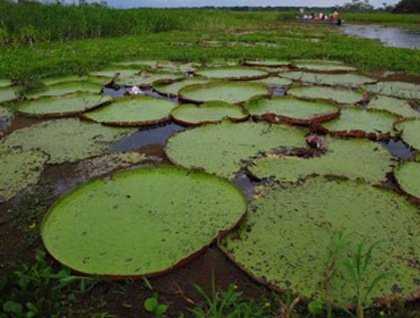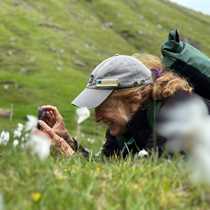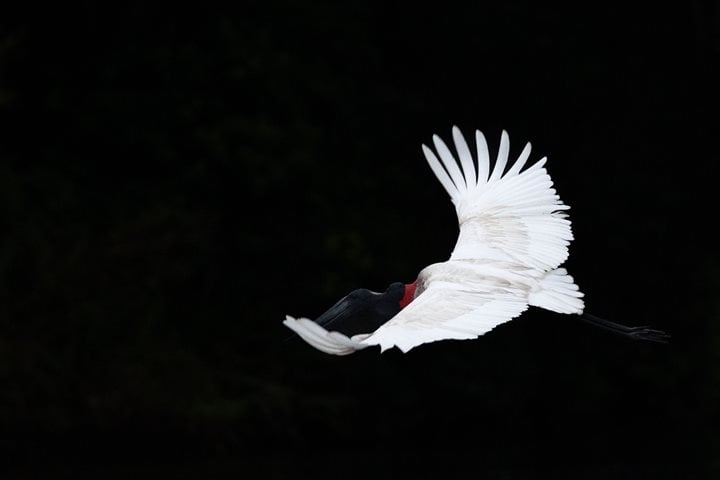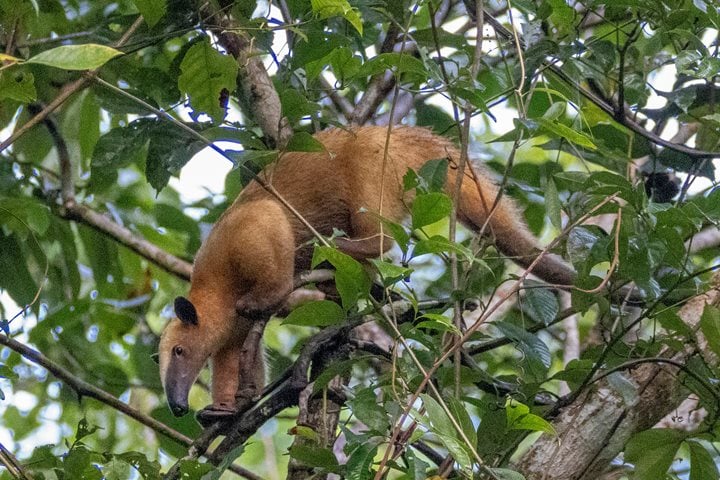The day seemed to roll in shifts. Early this morning the banks of the flooded forest were lined with dozens and dozens of ringed kingfishers. Perched on trees, flying to and fro, chattering, landing, and taking off again. It seemed a commuting frenzy all to find a fish for breakfast. Speaking of breakfast, we boarded skiffs this morning with the plan to dine alfresco in the area of Atun Poza. The three skiffs meandered through forest edges and flooded shortcuts and all came to meet for a lovely breakfast in the shade. A horned screamer, a bird that sounds like a donkey braying with its mouth closed, stood in silhouette atop a forest tree. This overstuffed-goose looking bird was our focal point as we were served a white glove breakfast. We munched on sweet potato rolls, fresh fruit, and muffins and washed it down with hot coffee or passion fruit juice.
For the afternoon the Reserva Nacional Pacaya-Samiria was our destination. This massive reserve, Peru’s largest nature reserve, is over 2 million hectares. Water levels are high and we navigated down channels and took shortcuts hither and yon through the flooded forest. The afternoon shift came on and it was the monkeys! With the expert eyes of our skiff drivers and naturalists combined, we found squirrel monkeys, a lovely fluffy-tailed Monk Saki monkey, two or three troops of Red howler monkeys, and a lone brown capuchin monkey. In the backwater amongst the water hyacinth and giant water lilies, we were in heron and egret territory. Great egrets stood practically shoulder-to-shoulder along the shoreline, but the birds wearing the best suit were the Rufescent tiger-herons. The herons were dressed in snappy brindled-orange striped bars, and we stopped to admire and photograph these stunningly plumed birds.
Then it was time for swimming. Several hearty souls jumped into the large lake and pronounced the water temperature to be quite comfortable, if not more than a bit murky. The murk just added to the mystery, especially when the pink river dolphins started to surface sporadically near the swimming area.
The horizon started to glow gold, our signal that it was time for us to return to our mother ship and for the evening shift to come to work. As we headed homeward, the insect gleaners of the night emerged. The sky began to flit with nighthawks and then the bats came out. We sped along and so did the bats, except they did a little more zigging and zagging as they caught their meal on the wing. Our appetite for wildlife was fully satiated after yet another amazing day on one of many rivers that feed the Amazon.







